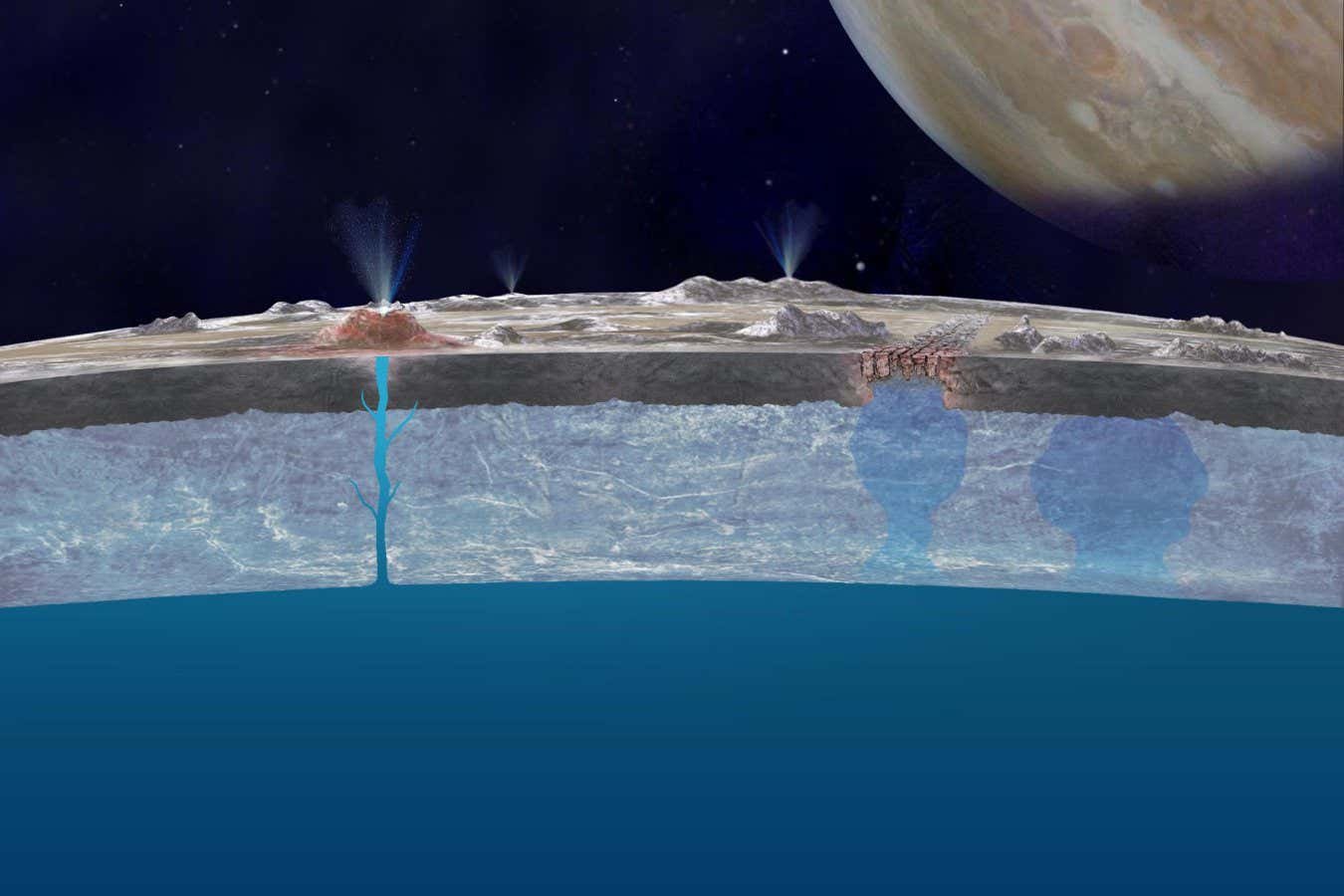
Jupiter’s moon Europa is covered by an icy shell
NASA/JPL-Caltech
Jupiter’s moon Europa may be less ripe for life than we thought. Although it has an ocean of water beneath its icy shell, the frigid moon may be short of the oxygen necessary to sustain life as we know it.
Oxygen is produced on Europa when radiation hits its surface and splits the water ice there into its constituent parts, hydrogen and oxygen. Models of that process have suggested the rate of oxygen production could be anywhere from 5 to over 1000 kilograms per second.
Jamey Szalay at Princeton University and his colleagues used data from the Juno spacecraft, which flew just 353 kilometres above Europa’s surface in 2022, to make a new estimate. They found oxygen is only being produced at a rate of about 12 kilograms per second on the surface – right at the low end of previous estimates.
“In some sense, the shell is like a lung for Europa. It’s continuously generating oxygen,” says Szalay. “That being said, we can’t speak to what happens after the oxygen is produced on the surface – it’s still a question how much of it could get into the ocean.”
But if there is less oxygen being produced in the first place, less of it will make its way into Europa’s waters. That may decrease the likelihood of researchers finding organisms similar to those living on Earth there.
One of the next steps is to figure out how much of that oxygen can seep through the alien moon’s icy shell. NASA’s Europa Clipper mission, planned to launch in October, should help us work that out. It will measure the thickness of the ice and hopefully make it possible to determine whether elements and compounds useful for life could pass through.
Topics:

